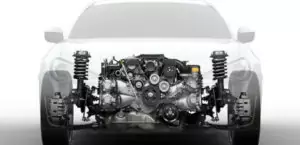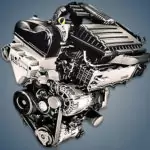The 2.0-liter Volkswagen BMP 2.0 TDI diesel engine was produced from 2005 to 2010 and was installed on the sixth generation of the popular Passat model and the similar Skoda Superb 2. This diesel engine is known for a frequent problem with the rapid wear of the oil pump hexagon.
The EA188-2.0 series also includes: BKD, BKP, BMM, BMP, BMR, BPW, BRE, BRT.
Specifications
| Production years | 2005-2010 |
| Displacement, cc | 1968 |
| Fuel system | unit-injectors |
| Power output, hp | 140 |
| Torque output, Nm | 320 |
| Cylinder block | cast iron R4 |
| Block head | aluminum 8v |
| Cylinder bore, mm | 81 |
| Piston stroke, mm | 95.5 |
| Compression ratio | 18.0 |
| Features | SOHC |
| Hydraulic lifters | yes |
| Timing drive | belt |
| Phase regulator | no |
| Turbocharging | VGT |
| Recommended engine oil | 5W-30 |
| Engine oil capacity, liter | 4.3 |
| Fuel type | diesel |
| Euro standards | EURO 4 |
| Fuel consumption, L/100 km (for Volkswagen Passat 2007) — city — highway — combined |
6.5 4.3 5.1 |
| Engine lifespan, km | ~280 000 |
| Weight, kg | 178 |
The engine was installed on:
- Skoda Superb 2 (3T) in 2008 – 2010;
- Volkswagen Passat B6 (3C) in 2005 – 2008.
Disadvantages of the VW BMP engine
- The most famous engine problem is the oil pump hex problem.
- The resource of unit-injectors is approximately 250,000 km, and their replacement is very expensive.
- Oil consumption up to 1 liter per 1000 km is also regularly discussed at specialized forums.
- The culprit for failures in engine thrust is usually a jammed turbine geometry.
- The reason for the unstable operation of a diesel engine may also be a dirty particulate filter.






